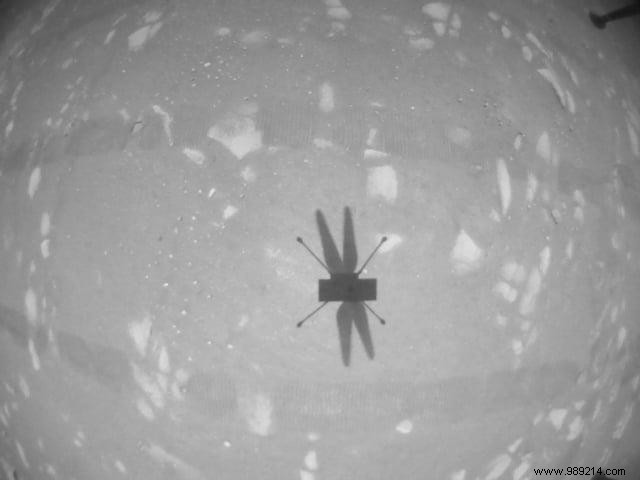China is seeking to develop a small helicopter similar to Ingenuity, deployed on Mars by NASA, to expand its space exploration capabilities. A first prototype has just been officially approved.
On the red planet since last February, the Perseverance rover is indeed accompanied by the Ingenuity helicopter (1.8 kg). The vehicle made its first powered flight (the first ever on another planet) in April. He operated his 12th, most recent and most ambitious flight on August 16, covering a distance of 450 meters in 169.5 seconds .
Ingenuity carries no scientific instruments. It is indeed a demonstration mission aimed at paving the way for other more ambitious machines. In fact, NASA is already looking at other concepts. Once deployed, these vehicles will be able to accompany future Martian explorers by allowing the transport or recovery of payloads. They could also be used to anticipate crossing routes, to estimate the potential of several exploration areas otherwise inaccessible to rovers or to allow the exploration of lava tunnels.

Also remember that NASA will launch in 2027 his drone named "Dragonfly" ("Dragonfly") to Titan. The three-meter-wide craft will test the habitability potential of Saturn's largest moon by performing "leaps" several miles in length. One of the objectives of this mission will also be to search for chemical biosignatures that could indicate past or present life.
Also, flying a helicopter on Mars, only NASA knows how to do it at the moment. The prowess of Ingenuity and the many advantages linked to the deployment of this type of vehicle in extraterrestrial environments have indeed not gone unnoticed. According to SpaceNews, for example, China is also working on the development of its own rotorcraft. Last Wednesday, the National Space Science Center (NSSC) announced that a first prototype equipped with a microspectrometer passed a final acceptance exam on August 20 .

The deployment of this small helicopter could be considered for future Chinese exploration of Mars, but the NSSC has not identified a specific mission. On the other hand, we know that the next Chinese mission to the red planet, whose launch is scheduled for 2028 or 2030, plans to return samples in the early 2030s, before considering a first manned mission to Mars as early as 2033.